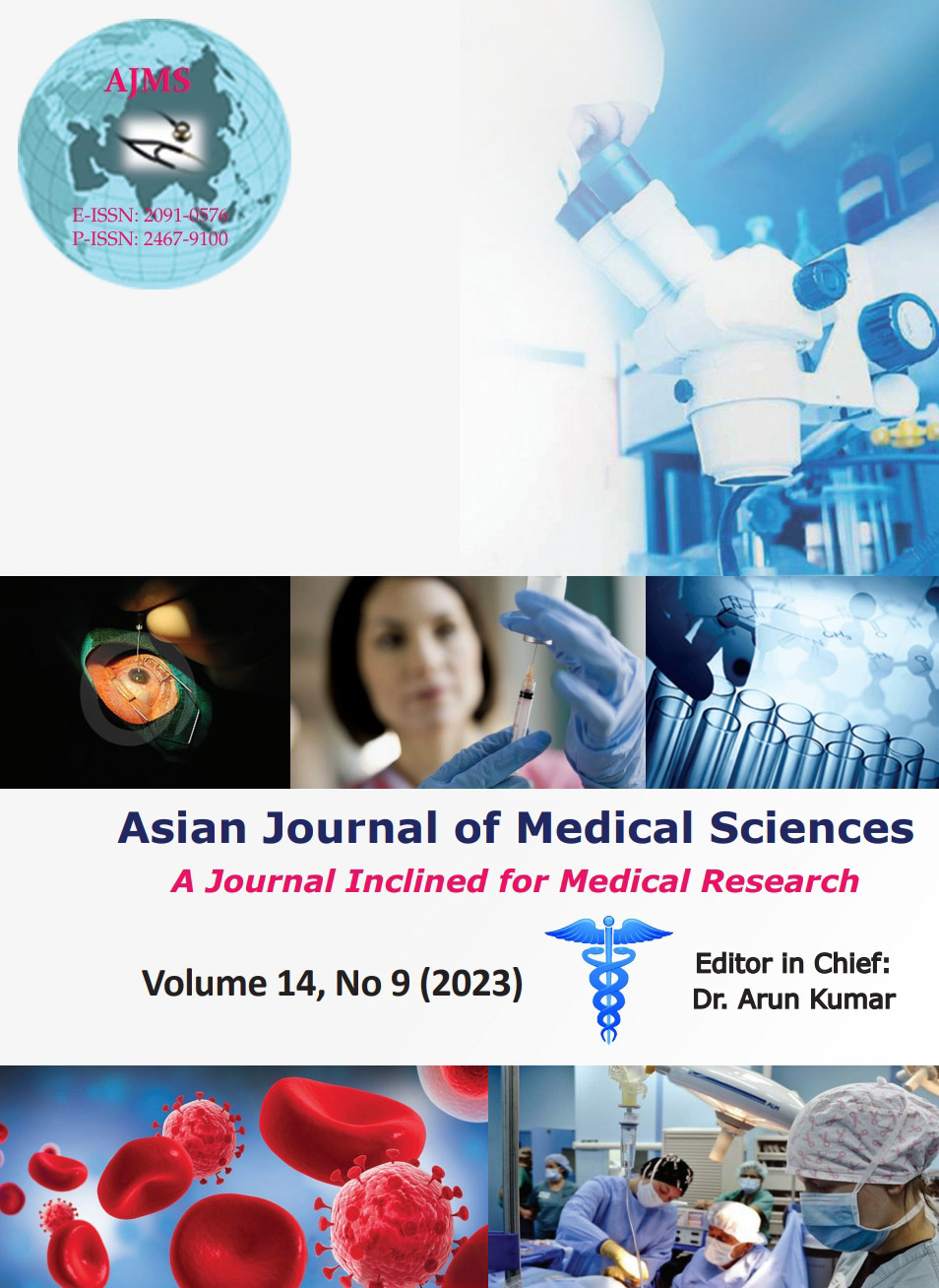Computed tomography versus ultrasonography in the evaluation of periumbilical abdominal pain
Keywords:
Ultrasound; Appendicitis; Computed tomographyAbstract
Background: The objective of this study was to study, assess, and make early diagnosis of periumbilical pain abdomen accurately.
Aims and Objectives: To study, assess, and diagnose causes of periumbilical abdominal pain accurately so as to minimize the unnecessary exploratory laparotomy and operations and consequently improved patient care and to compare the role of ultrasonography (USG) and computed tomography (CT) in the evaluation of various causes of periumbilical abdominal pain.
Materials and Methods: This prospective study (CTRI/2023/01/048809) was done on 315 patients with periumbilical pain at M.L.B. Medical College Jhansi, Uttar Pradesh on PHILIPS 16 Slice multi-detector CT SCAN machine and GE Vivid T8 ultrasound machine. These patients were blindly and randomly divided by chit system into two groups irrespective of their age and gender. The first group of patients which included 160 patients undergoes ultrasonographic evaluation and the other group of patients which includes 155 patients undergoes contrast-enhanced computed tomographic evaluation.
Results: Among 315 patients, the most common cause of periumbilical pain was found to be appendicitis followed by bowel pathologies which include gastrointestinal tuberculosis.
Conclusion: USG is the initial modality and modality of choice in female and young (3rd and 4thdecade) patients presenting with periumbilical pain as it is diagnostic in gynecological causes of periumbilical pain and also minimizes unnecessary radiation exposure to female and young patients. Contrast-enhanced CT is the modality of choice in male and old age patients (5th and 6th decade) as it is diagnostic in vascular causes. Overall plain CT has limited role.
Downloads
Downloads
Published
How to Cite
Issue
Section
License
Copyright (c) 2023 Asian Journal of Medical Sciences

This work is licensed under a Creative Commons Attribution-NonCommercial 4.0 International License.
Authors who publish with this journal agree to the following terms:
- The journal holds copyright and publishes the work under a Creative Commons CC-BY-NC license that permits use, distribution and reprduction in any medium, provided the original work is properly cited and is not used for commercial purposes. The journal should be recognised as the original publisher of this work.
- Authors are able to enter into separate, additional contractual arrangements for the non-exclusive distribution of the journal's published version of the work (e.g., post it to an institutional repository or publish it in a book), with an acknowledgement of its initial publication in this journal.
- Authors are permitted and encouraged to post their work online (e.g., in institutional repositories or on their website) prior to and during the submission process, as it can lead to productive exchanges, as well as earlier and greater citation of published work (See The Effect of Open Access).




